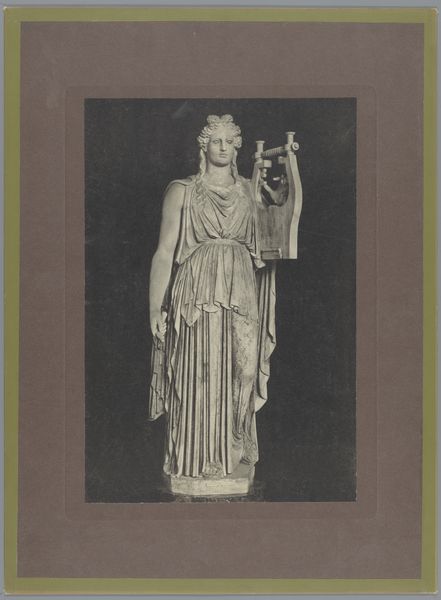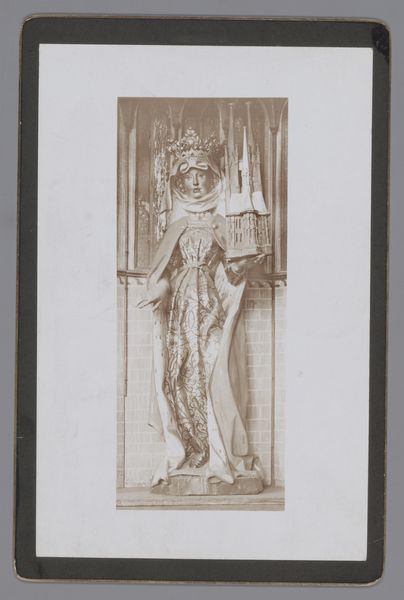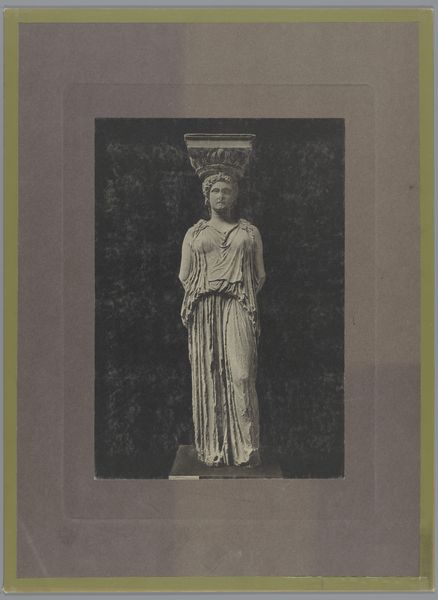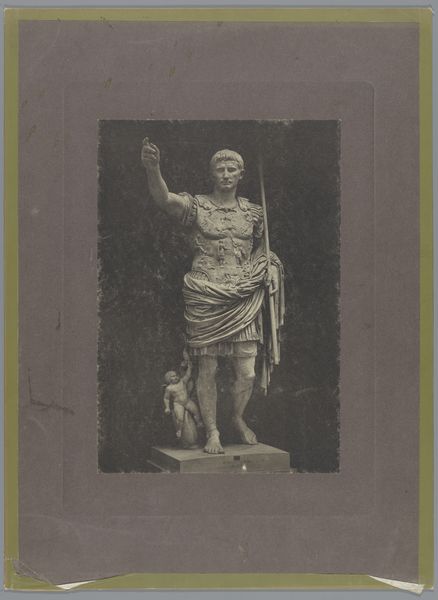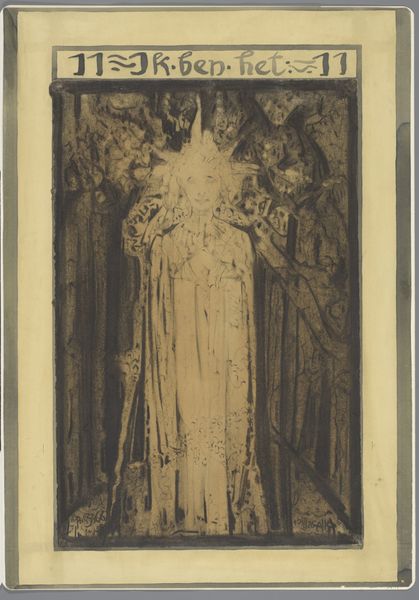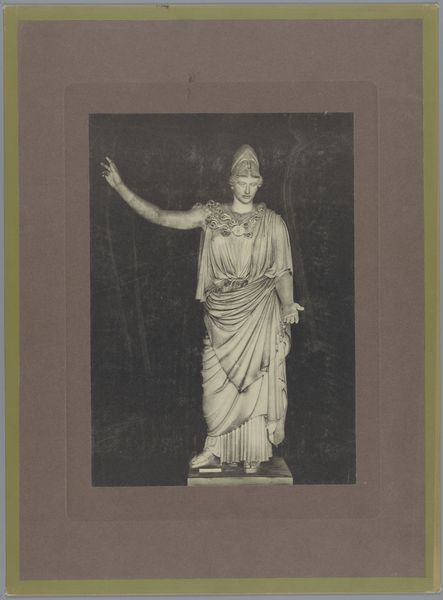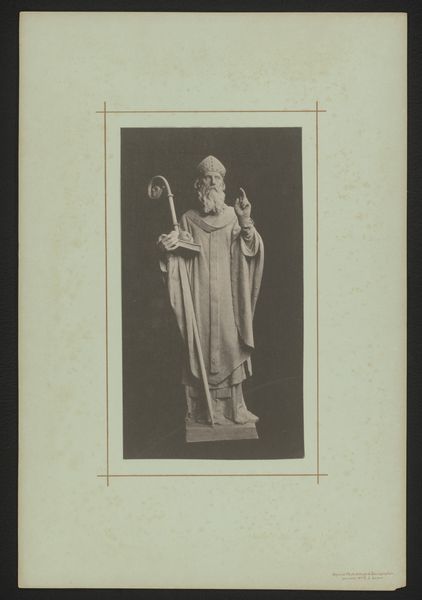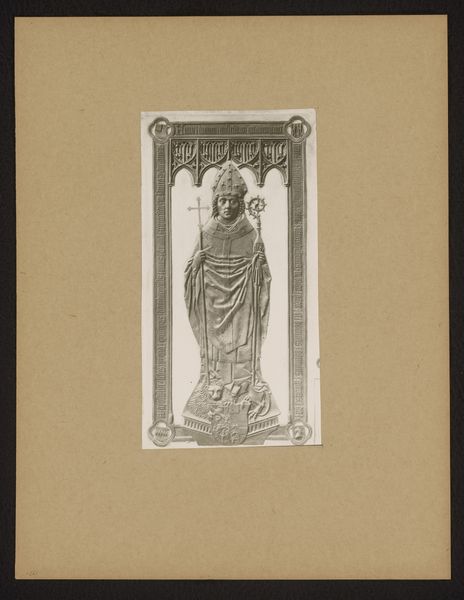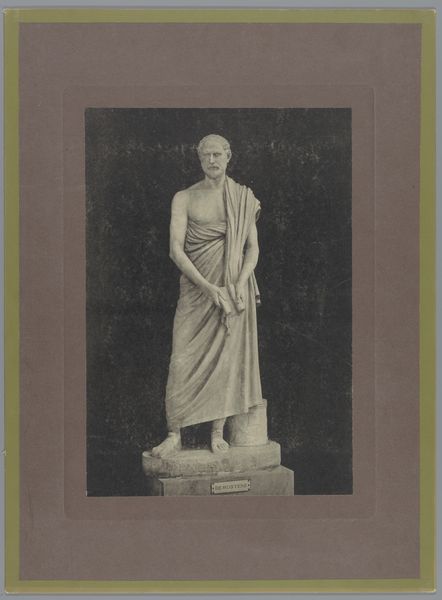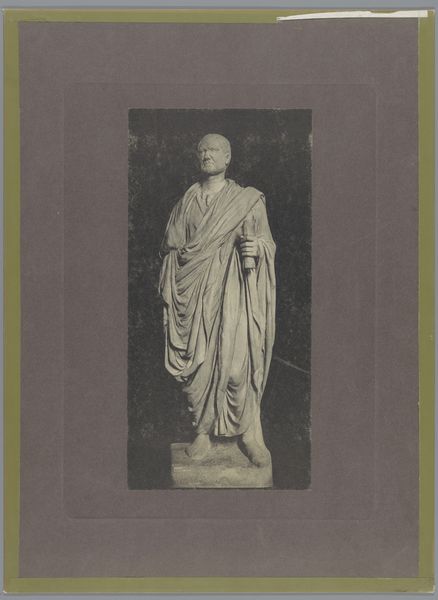
print, photography, sculpture, gelatin-silver-print
#
portrait
# print
#
greek-and-roman-art
#
figuration
#
photography
#
classicism
#
ancient-mediterranean
#
sculpture
#
gelatin-silver-print
#
academic-art
#
statue
Dimensions: height 415 mm, width 286 mm
Copyright: Rijks Museum: Open Domain
Curator: Before us, we have a photographic print from 1895 entitled "Kopie van de Athena Partenos (Varvakeion Athena)". It's a gelatin silver print, a photograph of a sculpture portraying the goddess Athena. Editor: There's an austere, almost mournful quality to it, isn't there? The monochromatic palette, the way the light catches the folds of her dress… It feels like a relic, shrouded in its own history. Curator: Indeed. It is a copy of the Varvakeion Athena, which itself is believed to be the most faithful reproduction of Phidias's lost gold and ivory statue of Athena Parthenos that stood inside the Parthenon. I am struck by the ambition and artistry involved in recreating such a colossal and revered piece, even if only through photography. Editor: Absolutely. But let's consider the photograph itself as a material object. Gelatin silver prints allowed for mass reproduction. In a sense, it democratized access to high art, reducing the artistic prowess of ancient civilization down to a consumable product, to a reproducible and profitable photograph. This piece also captures the academic interest in ancient Greece at the end of the nineteenth century. Curator: That tension between the original, awe-inspiring sculpture and its photographic representation is fascinating. There's an echo of the divine, but filtered through the lens of a burgeoning technology. When you gaze at the photograph of this representation, you cannot help to feel its grander, and how humanity still craves that classical idealism that this photograph tries so desperately to reach. It is an aspirational glimpse through a clouded glass. Editor: I would add it becomes a signifier of power through simulacra. This image enters the circulation of consumer culture through this photo, making the notion of power very removed from, while still tied to, its origins. The photograph becomes part of an ongoing chain of reproduction, blurring the lines between artifact and commodity, divinity and consumption. Curator: So, we are left contemplating not just a goddess, nor an artistic achievement in capturing an idealistic view, but the complex dance between art, reproduction, the passage of time, and the very nature of belief and commodity. What do you feel in the end looking at this recreation through all of those points? Editor: What strikes me most is the shift of labor, from sculpting something powerful out of stone, to something churned through a commercial photo printing process. Something ancient into the modern.
Comments
No comments
Be the first to comment and join the conversation on the ultimate creative platform.
